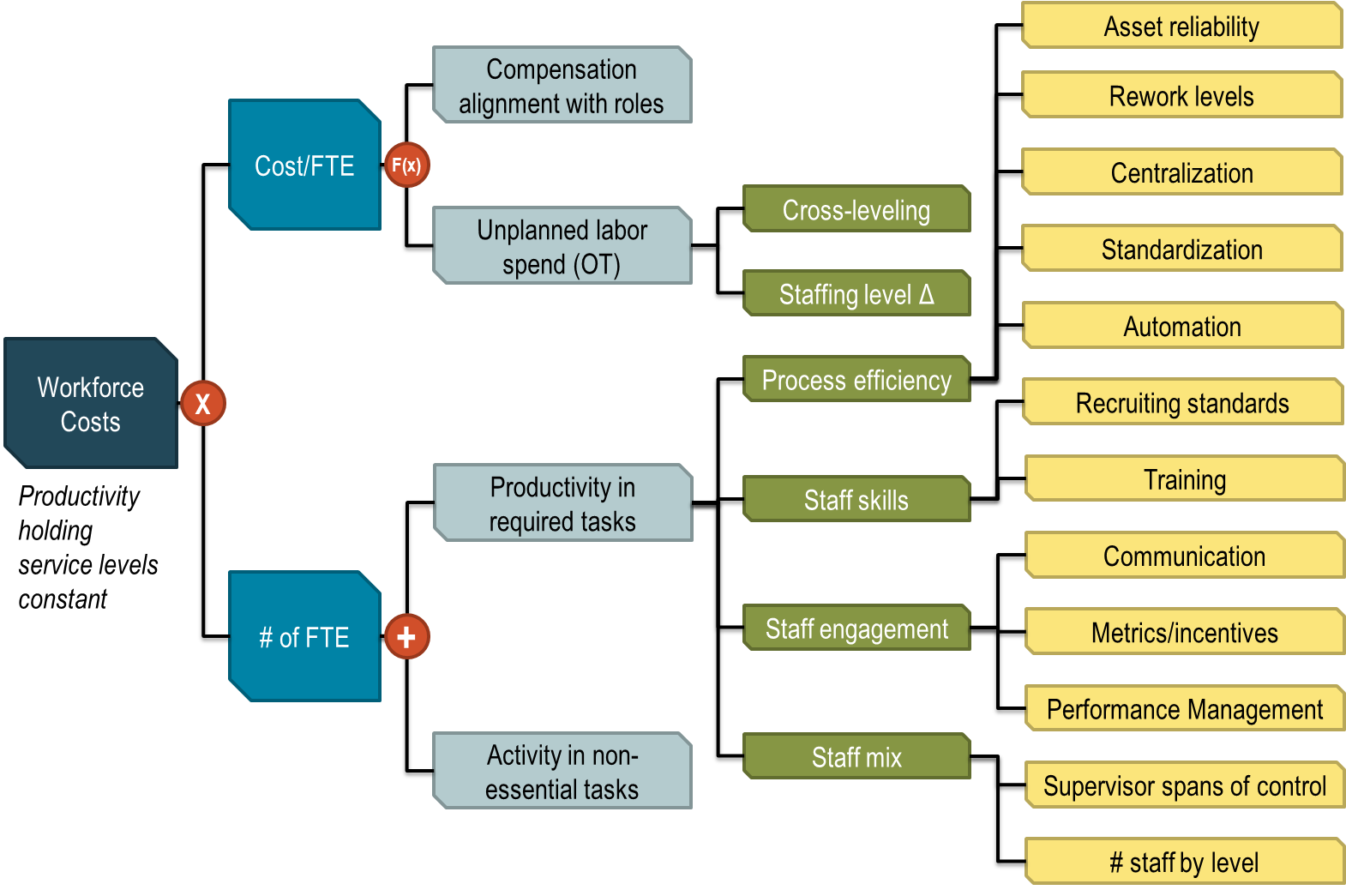Mac Hodell, global director of management consulting – strategic planning services
Continuing from my “Insight from our clients” post in April, this piece takes a further look at the drivers of organizational productivity. Consider this recent remark from the deputy commissioner of a large, urban water and wastewater utility, “While we are pretty diligent about evaluating assets and risk here – risk of main breaks, risks of overflows, etc. – we rarely do this with our organization or our day-to-day work processes. I’d bet we are making poor trade-offs around low risk and low consequence events, while reducing our efficiency…Do we ask what activities we even should be doing, let alone how efficient we are with required activities?”
His words are the perfect set-up for a discussion about the different drivers of organizational productivity, and where we can identify improvement potential. The graphic below decomposes organizational productivity into its supporting drivers, and it is a useful tool for communication as well as for brainstorming.
To start, neither the client nor our team knew just what the root causes of their inefficiency were, or which of these were the easiest to address. But by evaluating opportunities in a structured way, we then prioritized our efforts and selectively performed analytics, interviews, and/or process observations to provide fact-based recommendations. Another benefit of presenting a structured set of drivers is that it facilitates brainstorming. Utility leaders developed more and better ideas regarding potential improvements when presented with some structural framework than if simply asked, “How might we improve?”
I believe my client was correct in his assessment – both of his utility and of the industry at large. If this is true, then I think there is an opportunity for more utility leaders to expand their thinking and address risk and efficiency for the broader organization, beyond just the asset base.
Tell us what you think. Is your organization facing productivity risks? Is there a potential for identifying and addressing these risks?

